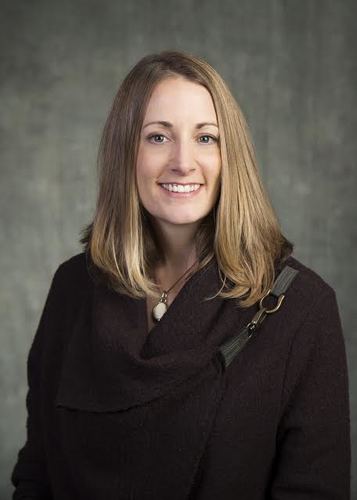I don’t take the decision to embark on an international pilgrimage lightly. With climate change, I am aware of the heavy carbon footprint of overseas travel. With the conflict in Israel/Palestine, I am also aware of the opinion that pilgrimage to the Holy Land is a practice that doesn’t benefit those who are on the margins.
Despite these potential harms of pilgrimage, as the Anglican Spiritual Care Provider (chaplain) at the University of Victoria, I offer opportunities for students to engage in the practice of pilgrimage, including journeys abroad. Pilgrimage is one of my core spiritual disciplines because it is here that I encounter the holy, step into the liminal, wrestle with the difficult questions, and come out transformed. Pilgrimage is a “retroactive spirituality” (Rodney Aist, Pilgrim Spirituality, Cascade Books: Eugene, Oregon, 2022) and the integration after a pilgrimage is a time-release experience. Processing what was seen, heard and felt unfolds slowly, often taking months, or potentially years, to realize the effects. The transformation is often subtle, but many of the most impactful decisions in my life have been shaped by pilgrimage. There is an argument to be made that pilgrimage does not have to involve going far. I agree that powerful pilgrimages can happen anywhere if an intention is honed, thresholds are created, spiritual practices are implemented, and community is involved. However, there is something significant for me that happens when I step onto distant lands.
When I was six months pregnant with my first child, my partner and I decided to go on a pilgrimage to intentionally mark the transition into parenthood and to find the names of our children. One of the stops on this name-finding pilgrimage was Iona, a small island in the Inner Hebrides in Scotland. When I set foot on Iona, I found belonging. With ancestral roots in Scotland, it was the first time I had ever felt, deep in my bones, a sense of belonging to land. From this pilgrimage, my children’s names were found on this island: my son, Odran, and my daughter, Iona.

During a recent pilgrimage to the Holy Land, I was again struck with a sense of belonging. While I do not have ancestry in Israel/Palestine, to be able to engage with the stories and lands that have been part of the Christian lineage of my ancestors, evoked a sense of belonging. The liminality and power that I felt as I walked in the footsteps of Jesus, was stunning. The meaning imbued in the rivers, lakes, grottos, stones and paths in the Holy Land heightened my understanding of the depth of relationship that the Indigenous Peoples of Turtle Island have with their ancestral lands. I have heard stories from different First Nations Elders about the spiritual significance of a particular mountain, tree, lake or rock. Through this ancient lineage, they have cultivated an ongoing, living relationship with the land. As a White settler living on the traditional lands of the Quw’utsun’ and Malahat peoples, I don’t have this same feeling of belonging at home. The lands where I live and work are stolen, and while they are my home, I don’t fully belong. Pilgrimage to distant lands has helped me to cultivate a living relationship with the land — land as a wisdom keeper and land as a partner. This worldview is crucial as the human species experiences the dire effects of climate change. Capitalism believes that land is a commodity that can be owned and abused. Pilgrimage helps to experience the land as living, and this experience helps to change our worldview and how we engage with our surroundings.
Pilgrimage engages our senses. It is through this embodied experience that a deepening relationship with the stories, with the land, and with the worldwide Christian community occurs. In the Holy Land, I had the opportunity to reaffirm baptismal vows in the River Jordan, to swim in the Sea of Galilee, to drink from the well where Jesus met with the Samaritan woman, to climb on my hands and knees out of the tomb of Lazarus, to pray next to the stone where Jesus was said to ascend to heaven (on the day of the Feast of the Ascension!), to sit in what is believed to be the Church of the Nutrition (the home of the Holy Family), and to receive communion in the Upper Room on Pentecost. I would go to the Church of the Holy Sepulchre, day after day, to take in the flurry of piety, devotion and activity of this sacred place. I would watch as pilgrims bless their crosses on the Anointing Stone, or kiss the walls of the tomb of Jesus, inch by inch. I would listen to the Coptic Christian chants and Franciscan hymns. I would smell the Syrian Orthodox frankincense. This orchestra of activity filled my senses.
While in the Holy Land, I was aware of the slow process of transformation within. I wanted to mark this inner transformation with a physical transformation. So, I got a tattoo. The Razzouk family has been tattooing Christian pilgrims for the last 700 years in Jerusalem. Wassim Razzouk is the 27th generation of family members who have been practicing this art form. “Our ancestors used tattoos to mark Christian Copts in Egypt with a small cross on the inside of the wrist to grant them access to churches. Those without it would have difficulty entering the church; therefore, and from a very young age, Christians would tattoo their children with the cross.” (https://razzouktattoo.com/pages/history). The tattoo that I received came from a 700-year-old wooden block print stamp, that was taken out of Egypt when the family left for the Holy Land. In a very physical way, I experienced this ancient Christian tradition practiced by centuries of Christian pilgrims to the Holy Land. I have been permanently marked with the reminder of all that I absorbed from my time on this pilgrimage.
Encounters with the sacred take time to integrate and processing what was seen, heard, and felt unfolds slowly. When I arrived back from this pilgrimage to the Holy Land, my dreams at night were consumed with the landscapes, the stories, and the experiences. Months later, I am still integrating. I appreciate the opportunities to share the parts of my pilgrimage story that I can articulate. Bringing the experience back to the community is a responsibility that every pilgrim holds. The privilege of undertaking a pilgrimage comes with it a responsibility to act, in tangible ways, out of the gifts of inspiration and renewal that are received on the journey. This action also deepens the integration process of the pilgrim, encouraging reciprocal exchange and benefit between the community and the pilgrim.
I am grateful to the Fred Hiltz Scholarship Fund, the Educational Trusts Board, and the Diocese of Islands and Inlets for their financial support of this pilgrimage. I am also grateful to St. George’s College in Jerusalem for organizing holistic, balanced, and meaningful study pilgrimages in the Holy Land. It is my intention and prayer that my experience in the Holy Land will continue to have ripple effects in the communities I serve and, in the lands where I walk.









